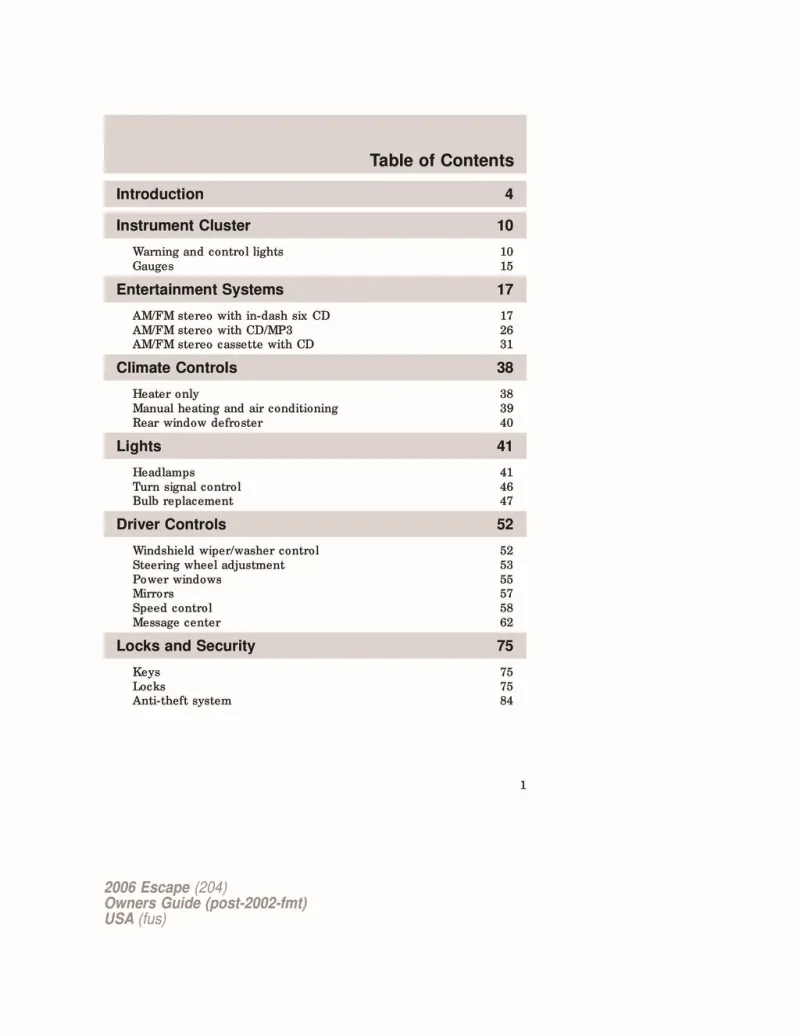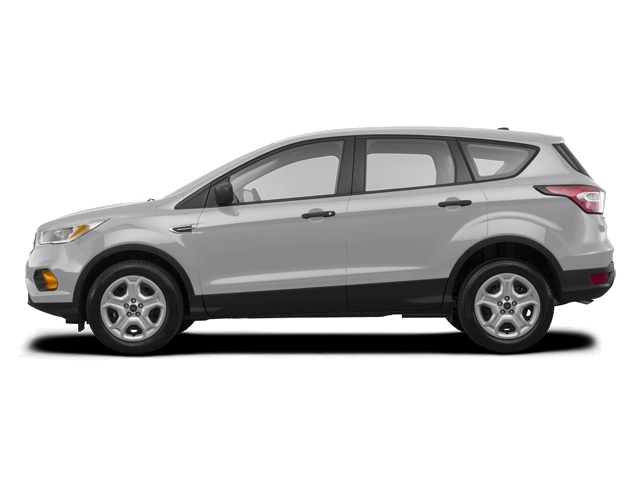2006 Ford Escape Owner's Manual

Table of Contents
2006 Ford Escape Overview
Introduction
The 2006 Ford Escape is a compact SUV that perfectly blends versatility and functionality, making it an excellent choice for adventurous families and city dwellers alike. With its bold design and robust performance, the Escape stands out in the increasingly competitive SUV market. This model year emphasizes reliability and comfort while providing ample cargo space and agile handling, making it a well-rounded option for drivers seeking both utility and style.
Powertrains
Ford offers a variety of powertrains for the 2006 Escape, catering to different performance preferences. The base model is equipped with a 2.3-liter four-cylinder engine, producing a respectable 143 horsepower, ideal for city driving and light off-road conditions. For those seeking a bit more power, a 3.0-liter V6 engine is also available, delivering an impressive 200 horsepower. Both engines are paired with either a five-speed manual or an optional four-speed automatic transmission, providing smooth gear shifts and enhanced driving pleasure.
Trims
The 2006 Escape comes in three well-equipped trims: XLS, XLT, and Limited. The XLS serves as the base model, offering essential features such as keyless entry, air conditioning, and a CD player. The XLT adds an array of conveniences like alloy wheels, a power driver’s seat, and upgraded audio. For those wanting a touch of luxury, the Limited trim includes leather seating, heated front seats, and a premium sound system, ensuring a superior driving experience.
Features
This compact SUV is loaded with user-friendly features that enhance comfort and safety. Standard amenities include cruise control, power windows, and remote keyless entry. For added security, the 2006 Escape also offers optional features such as an anti-theft system and side-impact airbags. The spacious interior can comfortably seat five passengers while still providing generous cargo space, making it ideal for weekend getaways and daily commutes alike.
Owner's Manual
The owner’s manual for the 2006 Ford Escape is a comprehensive guide designed to help owners maximize the potential of their vehicle. It includes important information on maintenance schedules, troubleshooting tips, and safety procedures. Additionally, it provides insights into the operation of various systems within the SUV, ensuring that every owner can enjoy a pleasant and hassle-free driving experience.
User manual download
The Ford Escape owner manual for the 2006 model year is to be found in PDF downloadable format on this page. The owner manual for the model year 2006 is free and in English, but the repair manuals are usually not easy to get and may cost more.
Manual Questions
Fill the form below and someone will help you!

